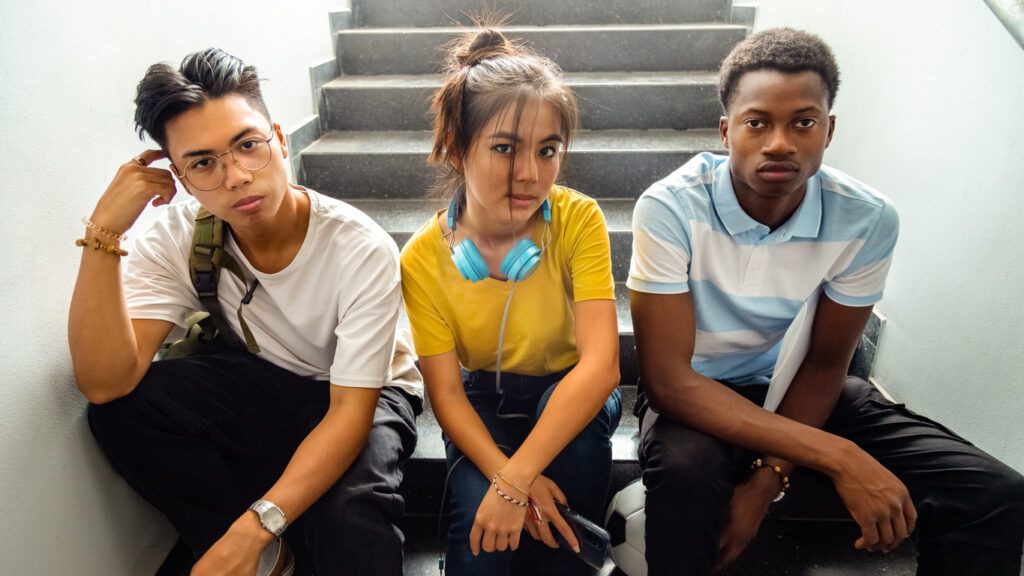By, Ryan C. T. DeLapp, Ph.D.
Race-based stress (RBS) continues to be a social, emotional, and cognitive stressor that many youth of color must learn to navigate in their daily lives. Specifically, RBS describes the moments when young people question whether they are being mistreated, negatively judged, or denied opportunities due to their racial or cultural background. The sources of such stress can be quite broad, ranging from racially insensitive social interactions to frustrated efforts to navigate different community spaces.
Consider these stories:
Sarah is a Black teenager who is finding it hard to feel a sense of belonging in her school. Sarah is one of only a few students of color within her school, which is often highlighted during her interactions with peers and teachers. Her peers have a history of teasing her about her hairstyles and often question her intelligence while they work on group projects. Sarah has attempted to confide in teachers about these experiences, but has been told some variation of, “Kids will be kids” or “High school is tough for everyone.”
Terry is a Latino young adult who recently started college — a transition that required him to leave his culturally rich neighborhood and move to a less ethnically diverse community. Terry has largely done well academically but has noticed that he has some newfound tension within his family relationships when he returns home. Of course, his family is proud of him, but Terry is finding it hard to make sense of certain statements, like “Don’t think you are better than us, college boy,” or being judged as “Acting too White” when he talks about his evolving interests.
From the stories of Sarah and Terry, we see that RBS can show up within different community spaces and occur within both BIPOC and non-BIPOC relationships. And, due to the potentially harmful effects of such experiences, it is important that youth of color feel equipped to notice if and when these experiences are taking a toll on their daily lives.
One way to help youth like Sarah and Terry explore the impact of such experiences is to teach them how to observe and describe their B-E-A-T. Specifically, youth can learn to pause and notice the effects of RBS on their Body sensations, Emotions, Actions (or choices), and Thought patterns.
Importantly, the information gleaned from their BEATs can alert them to the moments when their encounter with racially stressful environments has triggered emotional stress (the intense and uncomfortable bodily and emotional responses caused by RBS), identity stress (the ways RBS can impact one’s expression of self-love, self-confidence, and cultural pride), or agency stress (the ways RBS impacts one’s ability to correct, improve, or change racially stressful situations).
Also, tuning into their BEATs can help young people clarify what coping skills and social supports may be most useful based on whether they are noticing emotional, identity, or agency stresses. For example, Sarah may notice signs of emotional stress within her BEAT and look for ways she can support her emotional healing from these experiences. Whereas, Terry may notice signs of identity stress within his BEAT and look for ways to protect his sense of self-love from the critical messages he is receiving from his family.
Essentially, the BEAT is a tool that can help youth learn what they need, when they need it.
For any helping professionals who have the good fortune of serving youth of color, it is important they learn how to create a safe and affirming space for youth to explore and discover how to listen to their BEATs — particularly their BEATs during the moments when they are most mindful of their racial and cultural backgrounds. By doing so, it can enhance the cultural responsiveness of the support the young people receive.
If you’re interested in learning how to better help your young clients tune into the BEATs caused by RBS, join us for a 5-part live online course called Supporting Young People of Color, starting April 8, 2024.
By completing this training, you will learn to use the foundational CBT concept of thoughts, feelings, and actions (aka the BEAT) to help youth of color learn when and how they have been impacted by RBS. Also, this series draws from the Racial, Ethnic, and Cultural Healing Unifying Principles (REACH UP; DeLapp & Gallo, 2022) to offer tangible guidelines for helping youth translate their BEATs into meaningful wellness decisions when they experience emotional, identity, or agency stresses.
I hope to see you there!
Click here to learn more and enroll in Supporting Young People of Color
